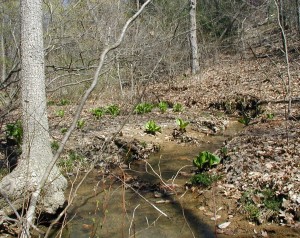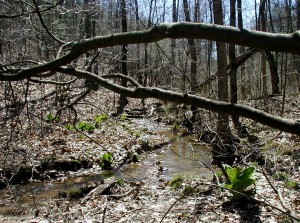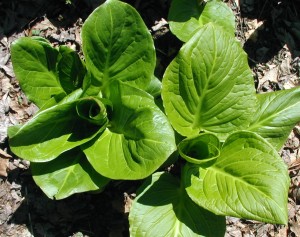The trees on our ridge-top are just starting to make their leaves so the hillsides still look bare. The spring-fed streams look more alive with the skunk cabbage developing their huge green leaves.
The skunk cabbage has already bloomed for the year and is one of the only noticeable green things out here. No doubt this creek was much higher after the deluge of rain the other day.
A sunfish scooted away as we approached the edge of a pool in this little stream.



In this lowland area there were ferns beginning to roll out their fronds and other small plants growing green. Brambles and garlic mustard are some of the first plants to really get growing at this time of year.
Skunk cabbage, Symplocarpus foetidus, is surprisingly edible. Crushing a leaf releases a skunky odor, so you wouldn’t think to eat this stuff. Eating a raw leaf will cause intense burning in the mouth because of the presence of calcium oxalate crystals. Drying the leaves or rootstock thoroughly will remove this property. Dried leaves can be reconstituted for use in soups or stews or used as a cooked green. According to Peterson’s Edible Wild Plants Guide, the rootstock can be dried and pounded to make a flour that is somewhat cocoa-like.
